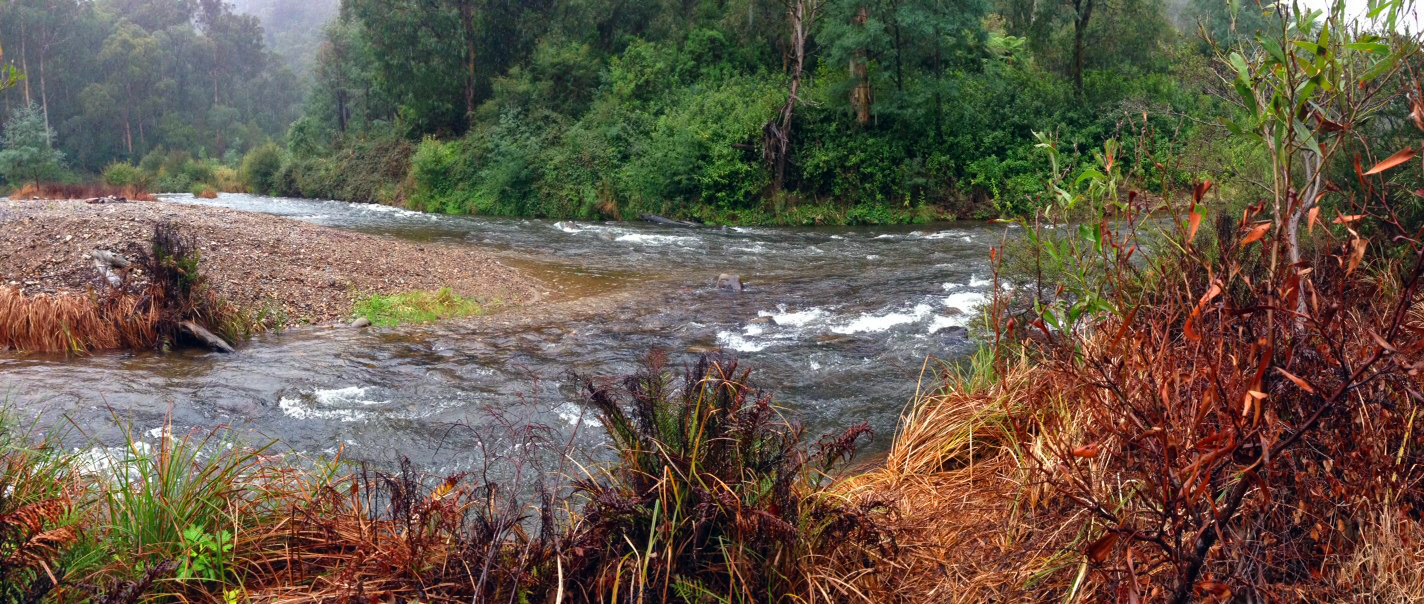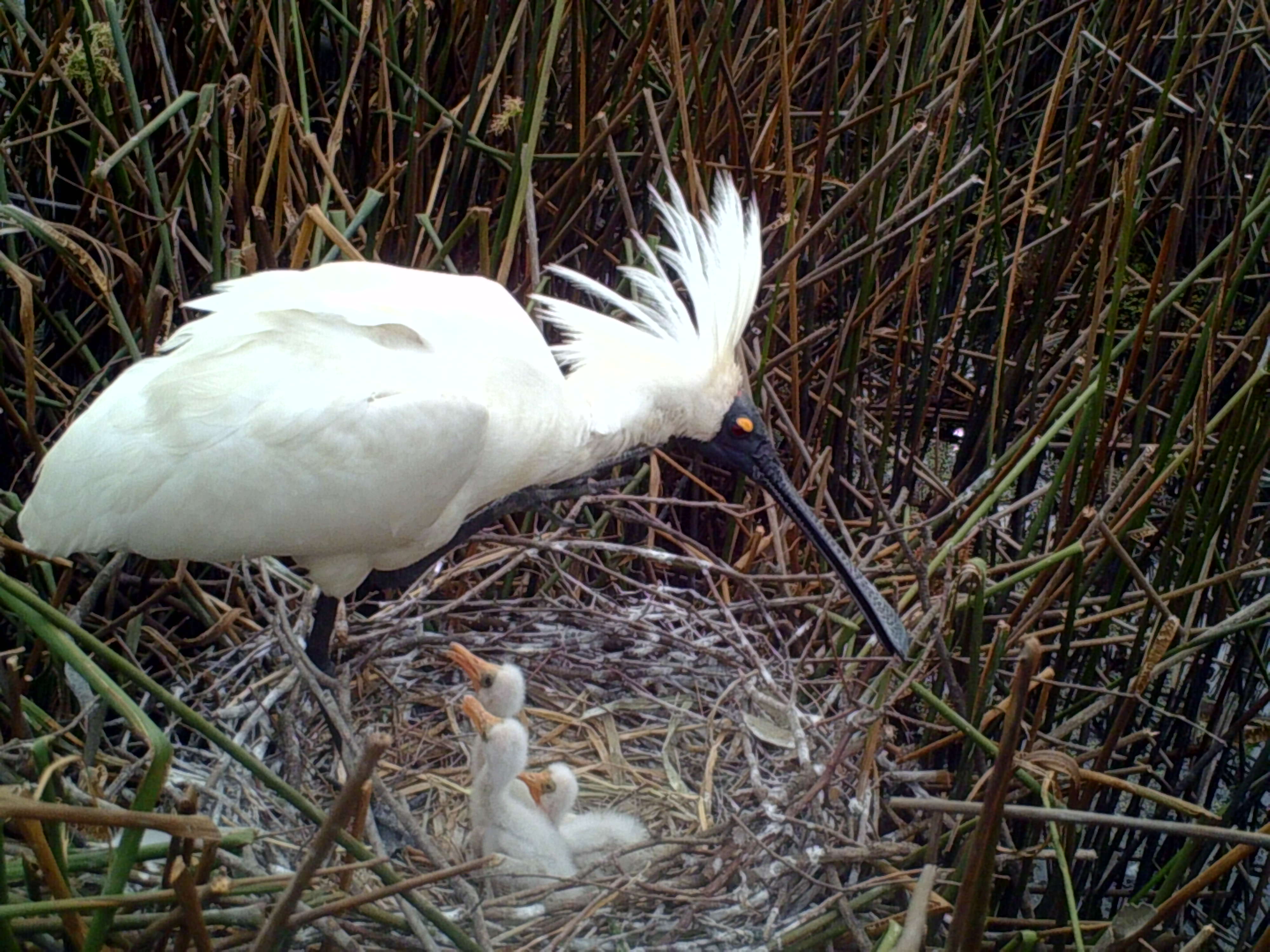It's raining, it's pouring and nature is filling rivers and wetlands during a plentiful wet season. So should we still put water into the environment when nature is delivering it on tap?
In drought years, it's easy to understand the need to deliberately release water into rivers and wetlands for animals, plants and the environment: parched wetlands, drying river beds and stagnant pools are visibly in need of water. But in wet years, it's not as easy to understand the need for water for the environment: If the river already has water in it, why do we need to send down more? Why do we need water for the environment when it rains?
The artificial drought
Rain or shine, many of Victoria's rivers, floodplains and wetlands constantly experience an artificial drought:
Victoria's waterways have continued to be modified as the population has grown, to provide water for food production towns and industry. The water in rivers is now pooled up in water storages and its flow controlled by weirs and other mechanisms. In some rivers, up to half of the water that would have naturally flowed in them is removed each year for farms, homes and businesses. Even in a wet year, most rivers are still in drought compared to their natural condition. The program to deliver water for the environment was established to help ease some of the impacts of this high level of water extraction.
Rivers rely on a pattern on flow
Rivers are meant to have a seasonal pattern. The volume, timing, speed, duration, frequency, quality and range of river flows are all essential for the ecosystem. Each part of a river's flow pattern has its own job to do, whether it's a high flow in spring to prompt fish to move and breed or an overbank flow to give a drink to river red gum and black box forests.
Most of the water we usually see travelling down a river is not water for the environment but water released from a water storage for farms, homes and industry. In fact, water specifically managed to help plants and animals makes up less than a quarter of the water released into Victoria's rivers.
Water for the environment breathes life back into our river systems, creating highs and lows where and when they are naturally needed. We use environmental flows to make sure the right amount of water is in the right place at the right time to trigger feeding, breeding, fledging or migration for fish, birds, turtles and other animals, as well as to water trees and other vegetation and refresh the floodplain.
Even if it is a wet year, water for the environment might be required to help mimic some of the natural seasonal flow patterns the river landscape and its wildlife need.

An autumn flow of water for the environment in the Thomson River at Coopers Creek, by West Gippsland CMA
Flood water can't always reach wetlands because of constructed barriers
Before European settlement, when rivers flooded, water would flow over river banks and cross the floodplain to soak natural wetlands. Today when floods occur, dams, levee banks, weirs, roads and other structures stop water from reaching some
wetlands. This is why today, even when it rains, water still needs to be pumped to these wetlands so that plants and river animals get the drinks they need to thrive.
Watering for a wet 2016–17
Victoria had an extremely wet year in 2016–17. In July 2016, rainfall was 200 percent above the average in the Goulburn, Kiewa and Ovens river catchments, and there was flooding along many River Murray floodplains. We had our wettest September
on record, with major flooding of the Glenelg, Wimmera and Loddon rivers. Later, most of December's rain fell in one day — 29 December — delivering the highest summer rainfall on record and triggering flash flooding of several places across the state.
Interestingly, the 2016–17 deluge had not been predicted: meteorologists had forecast that 2016–17 might repeat the prolonged dry conditions of the previous year. Fortunately, waterway managers plan for all weather.
"Weather conditions change and we need to be responsive," said VEWH Co-Executive Officer Trent Wallis.
"We know that our climate varies naturally over seasonal, annual and longer cycles. We also know that climate change is now increasing the frequency of extreme weather — flood and drought — and with it the degree of uncertainty facing Victorian
communities.
"The unpredictability of our weather means that those of us who manage water for Victoria's environment have to plan ahead each year for all weather scenarios."
Each year, local waterway managers develop seasonal watering proposals based on scenarios for drought, dry, average and wet-to-very-wet conditions. There is no one-size-fits-all year-to-year, so these scenarios provide options for watering rivers and
wetlands, based on the seasonal climate conditions and water availability for the year.
Trent explained, "In drought, the focus may be on avoiding the loss of species such as fish, platypus or waterbirds. During average and wet-to-very-wet conditions, water for theenvironment aims to recover and enhance waterways."
This includes:
- improving ecological health and resilience
- reconnecting rivers to floodplains and wetlands
- improving and enhancing opportunities for populations of key animal and plant species to grow and strengthen.
"Sometimes, we have to think of environmental flows as preventative medicine," said Trent.
"Watering when it's wet enables rivers and wetlands and their animal populations to become stronger and more resilient if conditions turn dry again."
Some of the water planned to be released for the environment in 2016–17 was not delivered. For example, when heavy rain hit the west of the state in winter and spring, waterway managers carefully monitored the Wimmera and Glenelg rivers and decided not to release any water from Rocklands Reservoir until late November 2016, when the threat of destructive flooding had subsided. Meanwhile, the Goulburn Broken wetlands did not need any 'managed' water for the environment in 2016–17: rain and natural flooding in late winter and early spring filled the wetlands earmarked for a drink. Summer rainfall then kept them wet until early autumn 2017.
However, many river and wetland managers were able to make the most of the wet weather and add water for the environment to natural flows, creating the deep, long drinks some of our wetlands and waterways need every few years. These soakings replenished trees (such as red gum and black box), rejuvenated floodplains and returned food and nutrients to the river for fish and other water animals (like platypus and turtles).
"As we are learning, it's hard to predict what weather 2017–18 will bring us," Trent said.
"But without doubt, our waterway environments are in a better condition to deal with whatever is on the horizon, thanks to the soaking we've been able to give them this year."
Baby birds benefit from watering when it's wet
Waterbirds certainly appreciated the water for the environment that was delivered on the back of the largest flood in Barmah Forest since 1993.
This water helped maintain shallow water around the waterbirds' nests in the wetlands until February, which meant the baby birds could grow their feathers ready for flight.
Without water for the environment on the back of the flood, adult ibis and spoonbills would have abandoned their nests in response to the dropping water levels, before their young could fly.
A royal spoonbill with its chicks, by Keith Ward, Goulburn Broken CMA
Examples of environmental watering objectives under different planning scenarios
Living with extremes
Victoria's climate has been following a drying and warming trend for several decades, and 15 of the 16 hottest years in Australia have occurred this century.
It is now clear that this trend is a result of human-induced climate change, and most climate models forecast that Victoria will become hotter and drier.
Modelling now forecasts that streamflows could reduce by around 50 percent in some Victorian catchments by 2065. This has serious consequences for everyone and everything — agriculture, households, industry, recreation, Aboriginal cultural values, liveability, waterway health and native plants and animals.
We may still have years when rainfall during the cooler months is higher than average, but these will occur less often.

